A butane camp stove is one of the best ways to cook while camping. There’s no need to fuss with complicated fuel lines or fuel pressure. Just pop in a butane canister, push a lever to lock it in place, and turn the fuel knob to ignite.
It’s super simple to use and (practically) dummy-proof!
Personally, I’ve been camping for over 25 years, and my preferred cooking method for both car camping and backcountry canoe camping is a butane stove.
So, let’s find out everything there is to know about how to use a butane stove and why a butane stove a great choice for camping.
Article Contents:
- What is a Butane Camp Stove?
- Advantages of Using a Butane Stove
- Disadvantages of Using a Butane Stove
- How to Properly Use a Butane Stove
- Best Butane Camp Stoves
What is a Butane Camp Stove?
When it comes to cooking outdoors, there are many options available. For most campers and camping situations, a butane stove is the best option.
A butane camp stove uses butane, a highly flammable, liquefied gas, to fuel a burner to provide a consistent heating source for cooking.
Butane is a fairly common fuel and used in many applications including BBQ lighters. It burns at over 1,900oC (3,500oF). Under pressure, butane is a liquid, and only when the pressure releases does it change into a gas.
But, there are a number of advantages and disadvantages of using a butane camp stove. Let’s go through them both.
Pro-tip: If you’re looking for information on liquid fuel stoves, check out my article How to Pick the Best Camping Equipment.
Advantages of Using a Butane Stove
Butane Canisters
The primary advantage of using a butane stove are the canisters.
- Butane canisters are convenient, light-weight (up to a point), low-maintenance, and low cost (again, up to a point).
There’s no need to worry about refilling or spilling fuel. All you do is pop in a canister and you’re good to go!
A standard butane canister contains 227 grams (8 ounces) of fuel. I’ve cooked steak, stir-fried vegetables, and boiled water all from a single canister.
Most butane camp stove manufacturers indicate that one butane canister will last up to 1.25 hours at maximum cooking conditions.
- For me, that means a single canister usually lasts at least two days with moderate cooking use.
Safe and Reliable Operation
Butane stoves are also very reliable and extremely safe to use while camping – kids can operate them with minimal supervision. [I even trust my wife to use one, which is saying a lot. Love you, sweetie!]
For a quick weekend trip, with light to moderate cooking, in warm to moderate climates, a butane fueled stove is a no-brainer. Individual canisters are lightweight, which makes them great for short backpacking and backcountry trips.
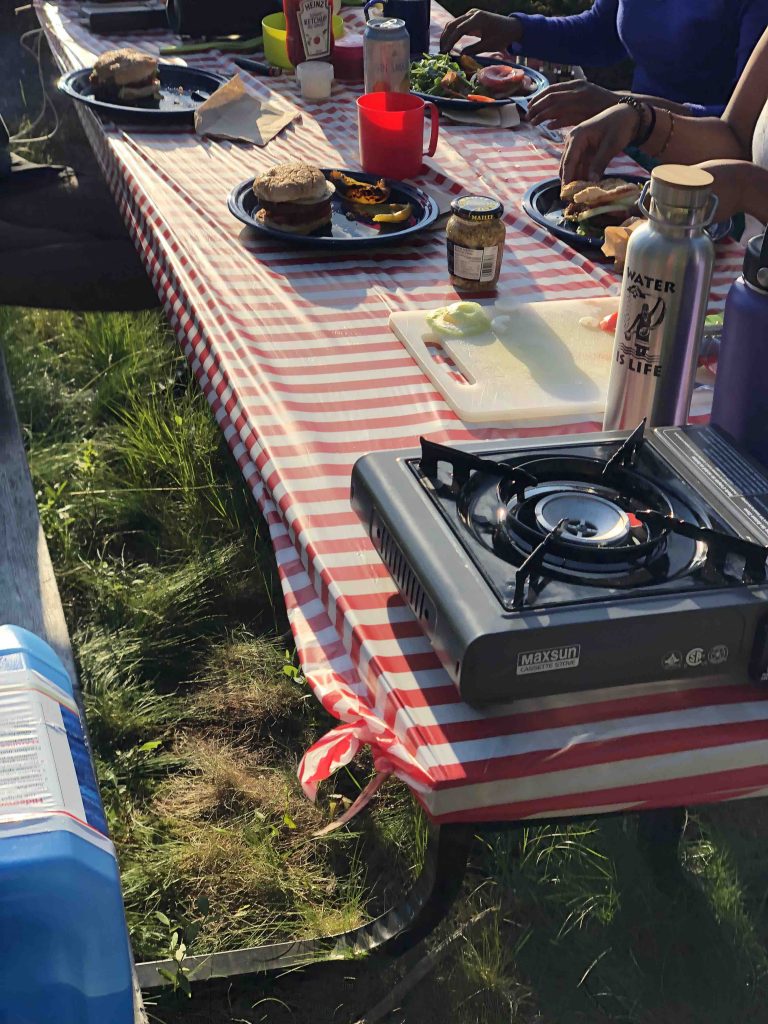
Disadvantages of Using a Butane Stove
There are number of disadvantages associated with butane stoves which include cold weather performance, weight, price, and availability.
Cold Weather Problems
Butane canisters contain a mixture of liquid and gas in equilibrium. As the gas is used, the liquid fuel evaporates and produces more gas. But, as we all learned in elementary school, liquids can only evaporate if the temperature is high enough.
- For butane, once the temperature dips below 0oC (32oF), the stove won’t work!
An added complication is that as the fuel is used, the canister itself cools. After extended use this can cause the internal temperature to drop. The gas flow will drop drastically and the stove won’t be able to operate as normal. You’ll need to wait until the canister warms back up to use it again.
So, if you plan on camping in cooler climates, it’s probably better to use an alternative fuel such as isobutane or liquid fuel.
Weight of Multiple Canisters
Although individual gas canisters are lightweight, depending on the duration of your trip and the total cooking time you’re planning, the number of butane canisters can add up.
Multiple filled (and empty) gas canisters start adding to your overall pack weight.
Price per Cooking Hour
Gas stoves are usually cheaper than liquid fuel stoves. However, gas canisters are significantly more expensive than liquid fuels, on a per hour of cooking basis.
Based on cooking metrics from MSR.com, one hour of cooking with a gas canister will cost about $6.00, whereas an hour cooking with white gas is about $1.50.
Availability
Outside North America, butane gas canisters are harder to come across. Liquid fuel is much readily available and used.
- For international trips, liquid fueled stoves are definitely highly recommended since fuel (gas or liquid) cannot be transported on an airplane.
So, once at your destination, you should be able to more easily access liquid fuel sources.
How to Properly Use a Butane Stove
To properly and safely use a butane gas camping stove, follow these steps:
Step 1 – Install Butane Canister
Remove the protective cap from the butane canister.
Open the door on the stove base where canister is to be housed. Lift the canister alignment tab and align it with the notch on the canister. Close the canister door
Ensure the gas flow dial is in the “Off” position.
Push the lever down to engage the canister.
Step 2 – Install Cooking Grate
Most camp stoves are designed to be as compact as possible. So, the steel grate is designed to flip over and into the main body of the stove.
Remove the grate and install it in the proper position for cooking.
Step 3 – Ignite Gas
Most butane stoves come with a built-in igniter. To use this function, turn the dial all the way.
You should hear a click and the gas should ignite.
If your stove does not have built-in lighter, ignite a portable lighter or match first. Make sure the flame is close to and over the edge of the burner.
Then turn the dial to begin the flow of gas and the gas should ignite.
Step 4 – Adjust Gas Flow
Turn the dial to adjust the flow of gas to the burner. In windy conditions, you may have to use a higher gas flow to compensate.
If required, create a make-shift screen from wood, large rocks or even a cooler to block the wind. But, ensure the stove is keep far enough way from your screen to keep the flame from heating the surface.
Step 5 – Return Stove to Safe State
To turn off the stove and to keep it in a safe state, turn the gas knob to off once you’re finished cooking.
Lift the canister lever to disengage the canister. Place the stove out of direct sunlight to keep the canister and stove base from excessively heating up.
Once cooled, flip the steel grate and place is carrying case for storing.
Best Butane Camp Stoves
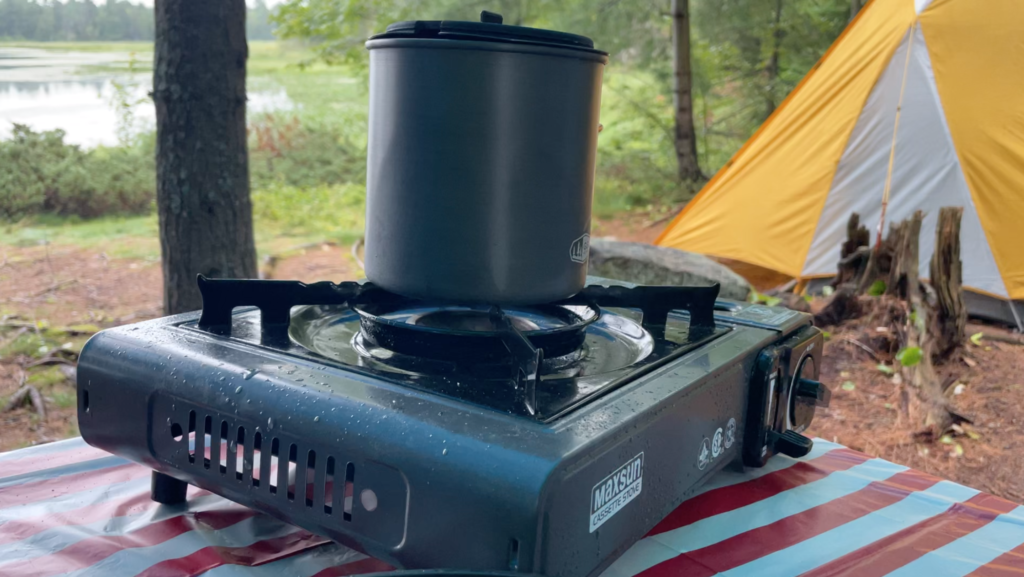
For most car camping trips and some shorter backcountry camping trips, a butane camp stove is a great choice.
Personally, for most of the trips that I go on, which include 3-4 day long car camping and portage (canoe) camping trips in the backcountry, I only take one butane camp stove and a few canisters. It’s very convenient for me and makes cooking a breeze.
I would highly recommend the following butane camp stoves.
Coleman Butane Stove
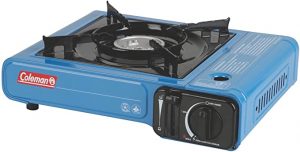
The Coleman butane stove is the standard camp stove most campers choose to use. It’s simple, light-weight, and gets the job done. It’s not overly complicated to use which makes it perfect for beginner and intermediate campers.
As a bonus, it comes with a handy carrying case which makes transporting it super easy.
For it’s low price, you can’t go wrong!
GasOne Duel Fuel (Butane & Propane) Portable Stove
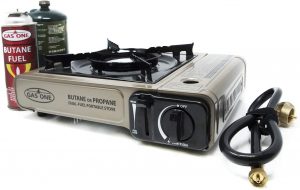
This stove is fantastic since it’s fully compatible with standard butane canisters as well as a hose adapter for use with small propane cylinders.
It’s made from high quality materials so it’ll last a lifetime.
For those looking for increased flexibility when it comes to gas fuels, you’ll want to pick one of these up!
Pro-tip: Definitely consider getting a foldable metal windscreen to protect the stove from excessive wind. This can help prolong the life of your fuel.
This article contains affiliate links, which help support this blog at no cost to you!

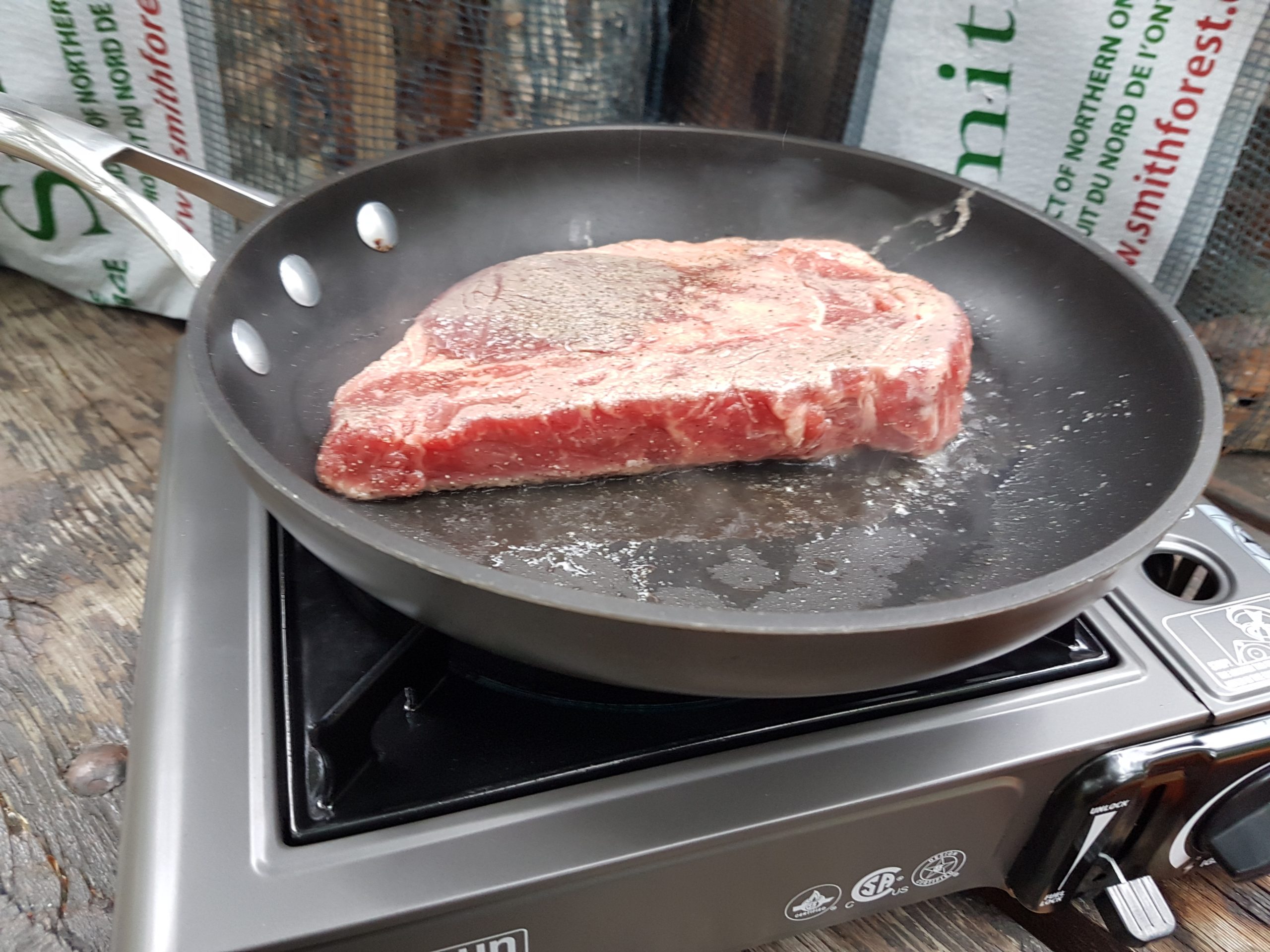
Pingback: How to Start a Camp Fire in the Rain – Pro-Tips & Instructions